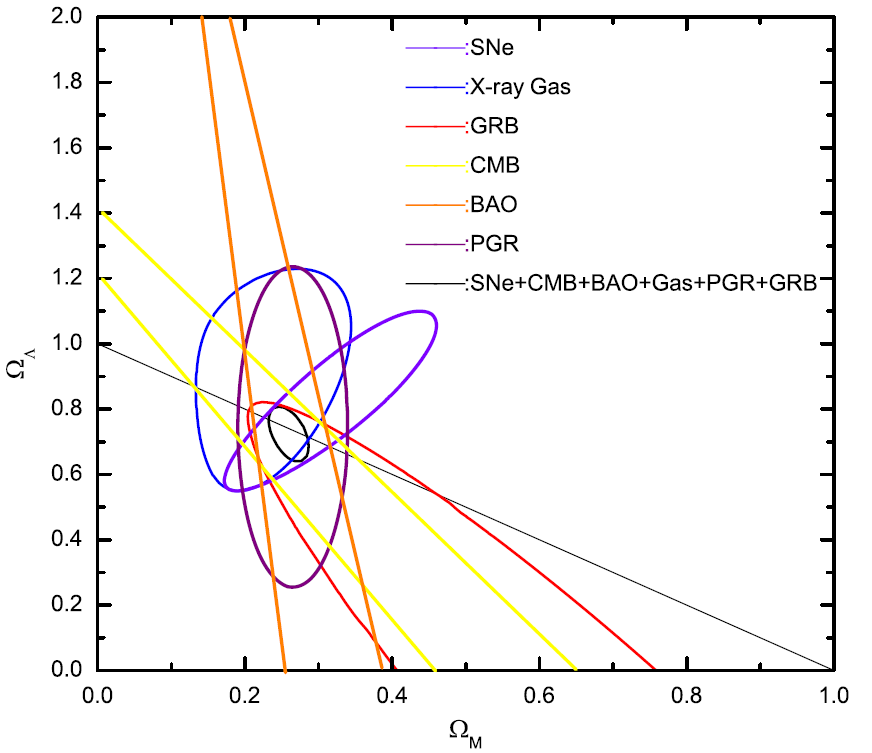Gamma-ray bursts (GRBs) are among the most luminous explosions in the Universe, which can be usually divided into two classes:long GRBs and short GRBs. Long GRBs are thought to be formed when a massive star undergoes core collapse, while the progenitors of short GRBs are mergers of compact stars. The extreme high luminosities of GRBs make them detectable out to the edge of the visible universe. Thus, they are powerful tools for probing the properties of high-redshift universe: including the cosmic accelerating expansion and dark energy, high-z star formation rate, the reionization epoch and the metal enrichment of the Universe. First, similar as Type Ia supernova (SNe Ia), GRBs can be made “relative standard candles” with the help of the luminosity relations of GRBs that have been found. Therefore, GRBs can be used to constrain the cosmological parameters and the evolution of dark energy in a redshift range hardly achievable by other cosmological probes. In addition to GRBs, SNe Ia, cosmic microwave (CMB), baryonic acoustic oscillations (BAO), X-ray gas mass fraction in galaxy clusters and growth rate data are also ideal cosmological probes. In Fig. 1, the constraint on the LCDM model from these observational datasets is shown. Different color contours represent constraints from different data. The best fitted parameters are consistent with a flat geometry. Second, long GRBs are believed to be triggered by the death of massive stars, which have shown to be associated with supernovae, provide a complementary technique for measuring the high-z star formation rate. Moreover, the use of GRBs as cosmological tools could unveil the cosmic reionization history, the pre-galactic metal enrichment, the properties of intergalactic medium, and the nature of first stars. Besides the above fields, the GRB high-energy photons can also be applied to constrain Lorentz invariance violation and to test Einstein's Equivalence Principle. 
By with WEI Jnujie Figure 1. Joint confidence intervals of 1 sigma for the cosmological parameters from the observational datasets. The work by Patrick Petitjean, Fa-Yin Wang, Xue-Feng Wu, and Jun-Jie Wei has been published in Space Science Reviews, in which they reviewed the progress on the GRB cosmology and fundamental physics probed by GRBs. Please see Space Sci Rev (2016) for more details: (http://link.springer.com/article/10.1007%2Fs11214-016-0235-6). |
